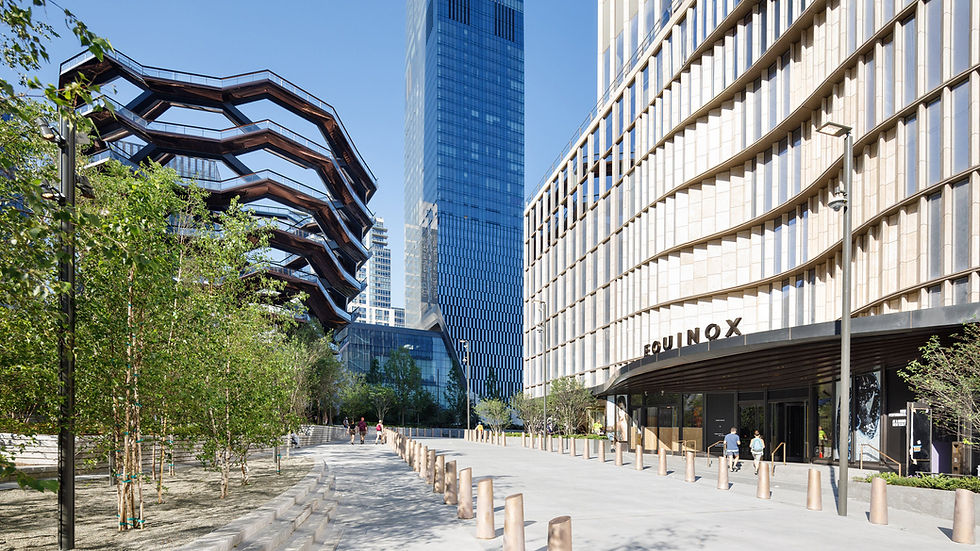Weekly Market Report - August 28, 2019
- Aug 28, 2019
- 3 min read
Last Tuesday, Belvedere Management Co., the landlord of 21-33 Irving Place, filed a lawsuit in the NY Supreme Court against WeWork. The company is saying that “when it signed its lease in 2016, WeWork used a special purpose entity, and it guaranteed the holding company was worth $150 million”. Two months ago, WeWork told Belvedere that the company was being restructured into WeWork Cos., and Belvedere is arguing that it wasn’t given the right notice about WeWork’s move and has no certainty that We Company has a net worth of at least $150 million. WeWork denies the accusations saying, “this process had no material impact on the guarantees we provide to landlords”.
Now in the second half of 2019, new trends for commercial real estate are emerging. One trend that sticks out is that millennial's are bringing the commercial industry to a new level. This specific generation works differently than other generations, as they require innovative work environments. Millennial's are responsible for driving the trends for co-working spaces and tech-savvy amenities. By 2020, millennial's are expected to be half of the global workforce.
Real Estate is Essential to New York
Real estate is one of New York City’s most critical anchors – from Lower Manhattan to Williamsburg in Brooklyn. It is one of the most important engines driving our success. This market – office, hotel, retail, residential, and utility – accounts for almost 43% of all tax filings into NYC’s coffers ($20 billion annually). Also, the market creates more than 600k jobs, making it one of the city’s largest employers, generating $140 billion in annual economic output. Currently, there is over 550 million SF of office space where companies do business. Co-working companies are making office space more flexible and high quality, as well as, affordable on short term leases. While there has been some negatives in the market, no one is denying that, New Yorkers know that the cost of living and doing business here is higher than any other market because this is where everyone wants to be.
High rents and competition from Amazon are not the only reason why there is a high vacancy rate for retail right now. Within the five boroughs, the vacancy rate increased 7.6-9% over the past 10 years with places, such as, Canal Street, West 14th Street, Bedford-Stuyvesant, Williamsburg, and Port Richmond, have the highest vacancy rates. While dry retail (non-food items) have grown online, restaurants, bars, local services (salons), and new models of retail (pop-ups, bookstore cafes, businesses that offer both store and online shopping) are actually growing. Other factors for the vacancy rates being so high are transit access, construction, zoning regulations, shifting demographics, and the challenges of running a small business. Neighborhood shopping is an important part of the urban life, and a study shows that many community shopping districts are rising. Unfortunately, landlords that have relatively large mortgages on their property are suffering as there is no way to support the mortgages and take on lower rentals. Many of the high-end properties will have to cut their rental prices in half to attract a retailer that can operate a healthy business. This ripple effect is going to cause many owners to lose their property because of the mortgage constraint or the land lease they executed. This in turn will give land owners to take back their property and become the direct landlords to tenants.
Chelsea Market is adding 12k SF of space to the underground area called Chelsea Local. This expansion will bring new vendors already established in New York, including Black Seed Bagels, Dickson’s Farmstand Meats, and more. After the expansion is done, Chelsea’s Market will be over 130k SF. Vendors will start to move in September, and the market is aiming to take advantage of its growing popularity. The number of annual visitors has risen from 6 million to 9.2 million in the past few years. The idea of Chelsea Local is to “focus less on dining and more on shopping for gourmet goods of all kinds”. However, even with this addition, Chelsea Market still faces competition as more and more food-halls are opening around the city.









Comments